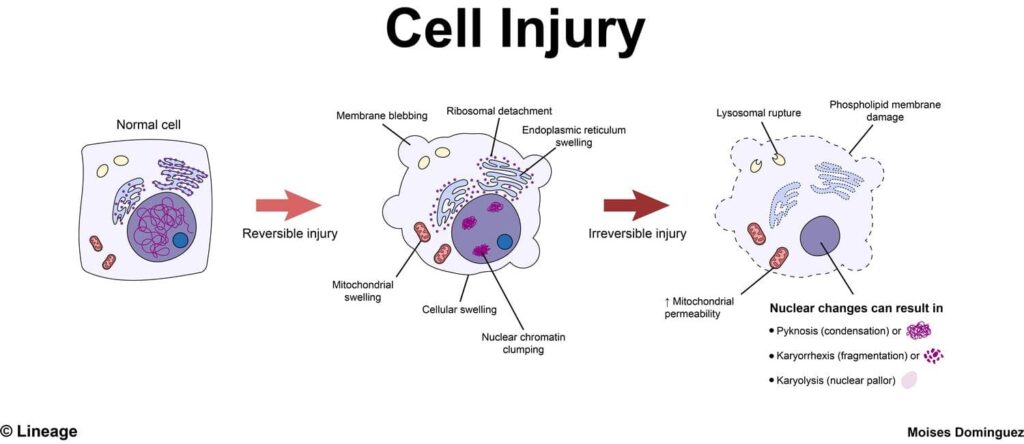Overview

Introduction
- Cells constantly interact with their environment and try to maintain homeostasis
- cells respond to stress (e.g., physiologic and toxic) via adaptation to maintain viability and function
- cell injury results when the cell can no longer adapt to the stress, which can be
- reversible
- implies that once the stress is removed the cell can return to its original state
- irreversible
- when the stressful stimuli is excessive or persistent the cellular damage becomes irreversible and cells undergo
- cell death
- when the stressful stimuli is excessive or persistent the cellular damage becomes irreversible and cells undergo
- reversible
- cell injury results when the cell can no longer adapt to the stress, which can be
- cells respond to stress (e.g., physiologic and toxic) via adaptation to maintain viability and function
- General mechanism of cell injury
- ATP depletion leads to
- reduced Na+/K+ ATPase activity causing
- cellular and endoplasmic reticulum swelling
- ↑ anaerobic glycolysis which subsequently leads to
- glycogen depletion
- ↑ lactic acid
- reduced calcium pump activity which
- alters calcium homeostasis and activates proteins
- reduced protein synthesis
- reduced Na+/K+ ATPase activity causing
- mitochondrial damage can result from hypoxia, reactive oxygen species (ROS), and ↑ intracellular calcium levels and leads to
- increased mitochondrial permeability which causes
- impaired oxidative phosphorylation resulting in
- the production of ROS (damages lipids, proteins, and nucleic acid)
- leakage of apoptotic proteins (e.g., cytochrome C and caspases) into the cellular cytoplasm
- impaired oxidative phosphorylation resulting in
- increased mitochondrial permeability which causes
- DNA damage that is irreparable results in
- apoptosis
- apoptosis can also result in misfolded proteins
- apoptosis
- ATP depletion leads to
- Etiologies of cell injury includes
- hypoxia
- ischemia
- toxin-induced (e.g., ethanol and cigarette smoking)
- infectious agents
- genetic abnormalities
- aging
- imbalances in nutrition
- physical causes (e.g., trauma)



